Introduction to Brewing Science and Infusion Methods
Welcome to the captivating realm of Brewing Science. For many, brewing might seem like a simple act of mixing water with tea leaves or coffee grounds. However, beneath this simplicity lies a fascinating tapestry of chemical reactions, delicate balances, and a profound interplay of factors that define the final essence of what we sip.
Empower Your Health Journey – Explore My Free Apps for a Vibrant, Healthier Lifestyle Today!
Delving into Brewing Science, one quickly realizes that the preparation of our favorite beverages isn't merely about achieving the right taste. The Infusion Methods adopted, be it steeping, boiling, or pressurizing, hold the key to unlocking the intricate chemistry within our drinks. These methods play a pivotal role in determining not just the flavor but also the concentration of vital compounds, such as theine in tea and caffeine in coffee.
Imagine your favorite cup of tea or coffee. The aroma, the taste, the color, and even the sensation it delivers, from that gentle nudge of alertness to a robust kick of energy, are all results of the chosen brewing technique. This article is your guide to uncovering these layers, diving deep into the world of infusion, and understanding how subtle changes in brewing can significantly alter the theine and caffeine concentrations, and thereby the impact on our body and mind.
As we navigate through the subsequent sections, you'll gain insights into the scientific backbone of your daily brews, shedding light on the often overlooked, yet fascinating intricacies of the art and science of brewing.
The Surprising Truth about Theine and Caffeine
The world of beverages is full of delightful intricacies and myths, many of which revolve around our two most beloved drinks: tea and coffee. A particularly intriguing and often misunderstood element is the active stimulant present in these brews. Many assume that tea and coffee have distinct chemicals providing their energy kick, but in reality, they share the same compound: trimethylxanthine.
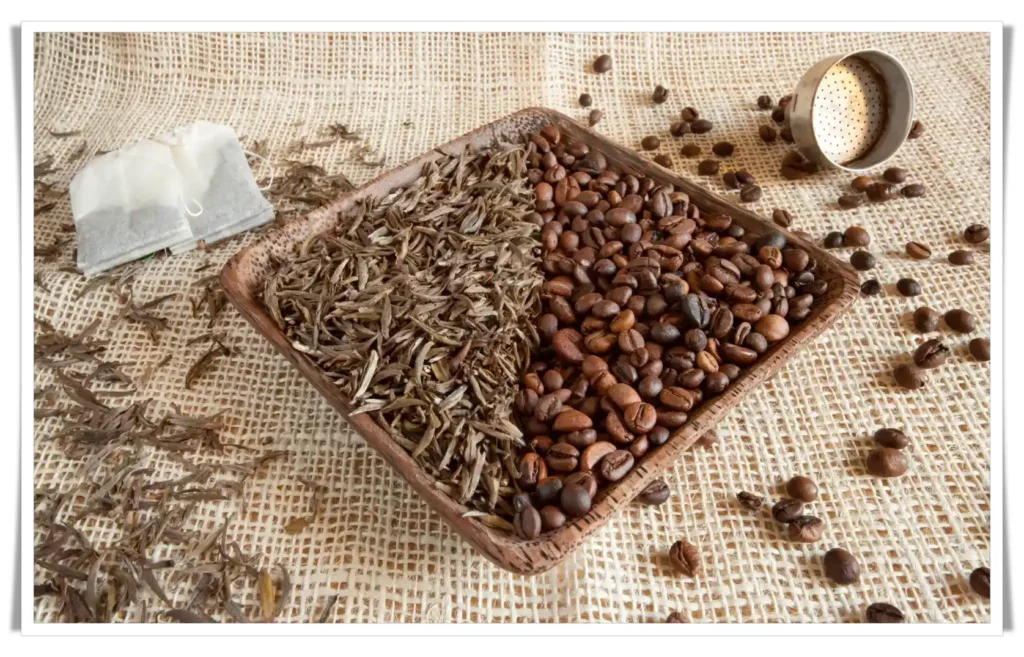
Imagine this: Every morning, as millions around the globe indulge in the ritualistic act of brewing and sipping, they are unknowingly partaking in a shared experience of consuming trimethylxanthine. The molecule dances through their systems, awakening senses, invigorating minds, and stimulating hearts. And while the rituals, flavors, and cultures of tea and coffee might stand oceans apart, this singular compound ties them together in a fascinating biochemical bond.
Historical Chronicles of Discovery
It's intriguing to note that despite being the same molecule, this compound was named differently due to its independent discoveries in tea and coffee. In the 19th century, a time of rapid scientific progress, two chemists stumbled upon this stimulating substance in two distinct beverages. The chemist who first isolated it from tea named it "theine," while his counterpart, who discovered it a decade later in coffee beans, christened it "caffeine." Little did they know then that they were talking about the very same molecule.
Differences in Perception and Consumption
One might wonder, if theine and caffeine are identical, why do tea and coffee have such varying impacts on our system? The answer lies not in the molecule itself, but in its concentration, its interaction with other compounds, and, importantly, the Brewing Science behind each drink.
Tea, for instance, contains other compounds like tannins that influence how theine is absorbed in our system. This, combined with the typical Infusion Methods for tea, results in a gentler, more prolonged release of energy. Coffee, in contrast, offers a direct, unbridled hit of caffeine, owing to its distinct composition and brewing techniques.
Comparing Tea and Coffee's Brew: Diving into Infusion Details
For countless individuals worldwide, the ritual of brewing a morning cup of tea or coffee is more than just a habitual caffeine fix; it's a comforting routine, a moment of reflection, or an energy booster to kick-start the day. But have you ever paused to ponder what goes on behind the scenes in that cup? The art and science of brewing hold intriguing details that significantly differentiate tea from coffee.

Coffee, with its rich, aromatic, and bold profile, is known to contain 2-5 times more active substances, primarily caffeine, than its counterpart, tea. This stark difference goes beyond the mere attributes of the coffee beans or the tea leaves. It is deeply embedded in the Brewing Science and the techniques we employ to extract flavors and compounds.
When tea leaves are introduced to hot water, a complex dance of chemistry begins. Among the compounds released are tannins. These naturally occurring polyphenolic compounds play a multifaceted role. On one hand, they contribute to the astringency and full-bodied character of the tea. On the other, they have a unique ability to bind with theine, the primary stimulant in tea. This binding action extends the release of theine in the bloodstream, ensuring a more sustained and moderated stimulating effect that can stretch from 3 to 6 hours. It’s akin to a slow, enduring symphony that lingers, allowing tea drinkers to experience a prolonged sense of alertness without the sudden spikes.

In contrast, coffee takes the stage with a different performance. Absent of tannins, coffee offers an unbridled release of caffeine. This results in an almost immediate and robust tonic effect that typically peaks faster but also dissipates within a shorter span, roughly 2-3 hours. It's a powerful, emphatic crescendo that delivers a swift boost of energy, making coffee the go-to choice for many who seek an instant pick-me-up.
The disparity in these effects, though rooted in the inherent nature of tea leaves and coffee beans, is significantly amplified by the respective Infusion Methods. It underscores the importance of understanding our brews, not just from a taste perspective but also for the unique experiences and benefits they offer. As we further explore Brewing Science, it becomes evident that the magic truly lies in the details.
The Role of Tannins in Tea
The Intricate Interplay of Tannins in Your Cup of Tea
Among the myriad compounds that make up our beloved cup of tea, tannins hold a special place. These are a group of water-soluble polyphenols, primarily responsible for the astringency, color, and some of the flavour profiles we associate with tea. But their role goes beyond just shaping our sensory experience of the beverage.
A Deep Dive into Tannins
To appreciate tannins' significance, it's essential to understand their nature. Tannins belong to a larger family of compounds known as polyphenols, which are widespread in many plants, including the tea plant (Camellia sinensis). They act as a plant's defence mechanism against herbivores and can inhibit the growth of fungi and bacteria. Their presence is a testament to the intricate defences that plants, like the tea bush, have evolved over millennia.
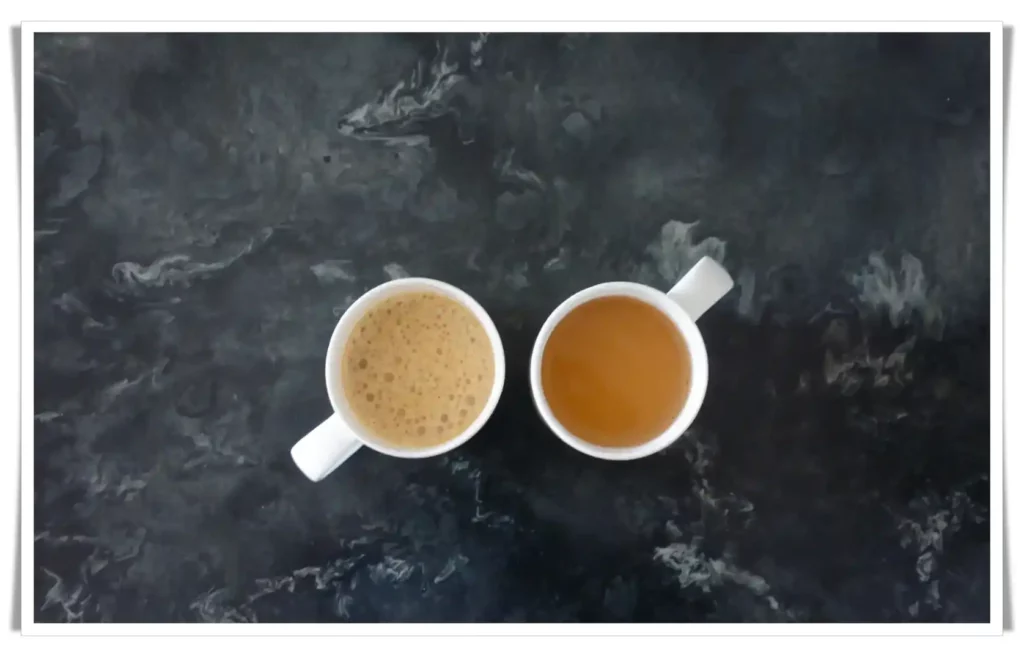
Tannins and Theine/Caffeine: A Delicate Dance
When it comes to the chemistry of brewed tea, tannins play a balancing act with theine/caffeine. Upon steeping the tea leaves, both tannins and theine/caffeine are released into the hot water. However, the longer the tea is allowed to infuse, the more tannins are released, which then bind to the theine/caffeine molecules. This binding process naturally slows down the absorption of caffeine into our bloodstream once consumed.
This is why a short-steeped tea can give a sharper stimulant kick. The tannins haven't had ample time to bind to most of the caffeine, allowing for a more immediate release of energy. Conversely, when tea is steeped for an extended period, tannins become more dominant, binding more of the caffeine and resulting in a gentler, more prolonged stimulant effect.
Beyond Taste: The Health Implications
Tannins aren't just taste influencers; they have potential health benefits too. These compounds have been studied for their antioxidant properties, which can help neutralize harmful free radicals in the body. Moreover, their ability to bind to proteins can aid in digestive health, although excessive consumption can hinder iron absorption.
A Study on Caffeine Consumption and Its Effects
A landmark study published in the Journal of the American Medical Association (JAMA) provides enlightening insights into caffeine's effects on human health. The research, titled "Association of Coffee Drinking with Total and Cause-Specific Mortality," undertook an extensive exploration into the health outcomes related to regular coffee consumption, focusing not only on caffeine but also on other compounds present in the beverage.
The study began with the assertion that millions worldwide consume coffee, yet its long-term effects on mortality were unclear. By examining over 400,000 U.S. men and women aged between 50 and 71 for 13 years, the research provided a comprehensive analysis.

Key findings suggested that regular coffee consumption was inversely associated with total mortality, meaning those who drank coffee regularly had a lower risk of death. The reductions in risks were seen in deaths due to heart disease, respiratory disease, stroke, injuries and accidents, diabetes, and infections, but not in deaths due to cancer. Whether it was caffeinated or decaffeinated coffee, the associations remained largely unchanged, suggesting other compounds in coffee apart from caffeine play a beneficial role.
The study effectively debunked several myths surrounding coffee consumption and health risks. It also highlighted the potential health benefits of regular, moderate coffee consumption while emphasizing the importance of a balanced approach.
In essence, the research not only deepens our understanding of coffee's impact on health but also offers peace of mind to regular coffee drinkers regarding its long-term effects.
Link Study: Association of Coffee Drinking with Total and Cause-Specific Mortality
The Science Behind Brew Time and Caffeine Release
Every avid drinker, be it tea or coffee, has a preferred method and time for brewing their beverages. Yet, few may realize the significant impact that their chosen Infusion Methods have on the caffeine content of their drinks. This is not just about taste or aroma; it's a complex interplay of chemistry and time.
The Nuances of Tea Brewing
Starting with tea, the clock plays a crucial role. For those seeking an immediate jolt, a quick-steeped tea, brewed for under 2 minutes, is your best bet. This rapid infusion ensures a swift release of theine (caffeine in tea) into the water, giving the drink its potent stimulating effect.

However, this dynamic changes when the tea is allowed to brew longer. The culprit? Tannins. These naturally occurring compounds in tea bind to theine, slowing down its absorption in our system. The longer the tea steeps, the more tannins interact with the theine, leading to a mellower stimulant effect. Hence, an extended brew might offer a more nuanced flavor but will come with a softer caffeine punch.
The Art of Coffee Brewing
Coffee, on the other hand, showcases a different story. Unlike tea, it doesn't contain tannins to interfere with caffeine. Instead, the brew time impacts the caffeine concentration directly. Consider the ristretto, a short shot of espresso. It has a briefer water-to-coffee contact time, resulting in lesser caffeine extraction. In contrast, a longer brewed espresso, where water interacts with coffee grounds for an extended period, extracts more caffeine, leading to a higher concentration in the final drink.
By The Numbers
For those who love quantifying their caffeine intake, here's a breakdown per 100 ml:
- Espresso: Standing tall with 130 mg of caffeine, it's a robust choice for those seeking a substantial boost.
- Tea: At 20 mg, it's subtler but offers a sustained release, especially when brewed longer.
- Filter/Instant Coffee: Positioned in the middle ground with 50 mg, it’s a go-to for many due to its balanced caffeine content.
- Espresso: Contains 130mg of caffeine per 100ml.
- Tea: Contains 20mg of caffeine per 100ml.
- Filter/Instant Coffee: Contains 50mg of caffeine per 100ml.
Understanding Your Caffeine Consumption: A Deep Dive into Dosage and Benefits
Navigating the world of caffeine can be both exhilarating and daunting. With varying levels of caffeine in different beverages, coupled with individual tolerances, it's essential to know your limits and benefits. Here, we unravel the mysteries surrounding caffeine consumption and its impact.
Daily Caffeine Intake: The Science Behind Numbers
Research has pinpointed an average daily caffeine intake of 200 mg as generally safe and effective for most adults. This amount roughly translates to about two 8-ounce cups of brewed coffee. However, this is a general recommendation, and individual tolerance can differ. Some might be more sensitive to caffeine, while others might have a higher threshold.

To push the envelope, there's a maximum recommended daily intake, capped at 400 mg. This amount is equivalent to around four 8-ounce cups of brewed coffee, ten cans of cola, or two "energy shot" drinks. But how can one tailor this number more specifically to individual needs?
Personalizing Your Caffeine Intake
An intriguing formula allows individuals to estimate their caffeine boundaries more personally: Weight (in kg)×6=Maximum allowable dose (in mg)Weight (in kg)×6=Maximum allowable dose (in mg)
For instance, if you weigh 50 kg, the formula suggests: 50×6=30050×6=300 Thus, a 50 kg individual can comfortably consume up to 300 mg of caffeine per day without adverse effects.
The Silver Lining: Benefits of Moderate Caffeine Intake
Interestingly, moderate caffeine consumption, equivalent to about 2-3 cups of coffee daily, offers tangible benefits. These include improved cognitive function, reduced fatigue, and enhanced physical performance. Furthermore, caffeine, being a diuretic, aids in the elimination of toxins through urine, promoting kidney health.
Refreshing Twists to Your Caffeine Fix
While hot brewed coffee is a classic favorite, for those sultry summer days, here's a delightful twist. Combine your espresso shot with chilled milk, heap in some ice, and you've got a tantalizing iced coffee. Not only does it refresh and hydrate, but it also provides that much-needed energy boost. So, the next time the temperatures soar, you know how to keep your cool, both literally and caffeine-wise!
Table: Average Caffeine Contents
| Beverage | Caffeine Content (per 100ml) |
|---|---|
| Espresso | 130 mg |
| Tea | 20 mg |
| Filter/Instant Coffee | 50 mg |
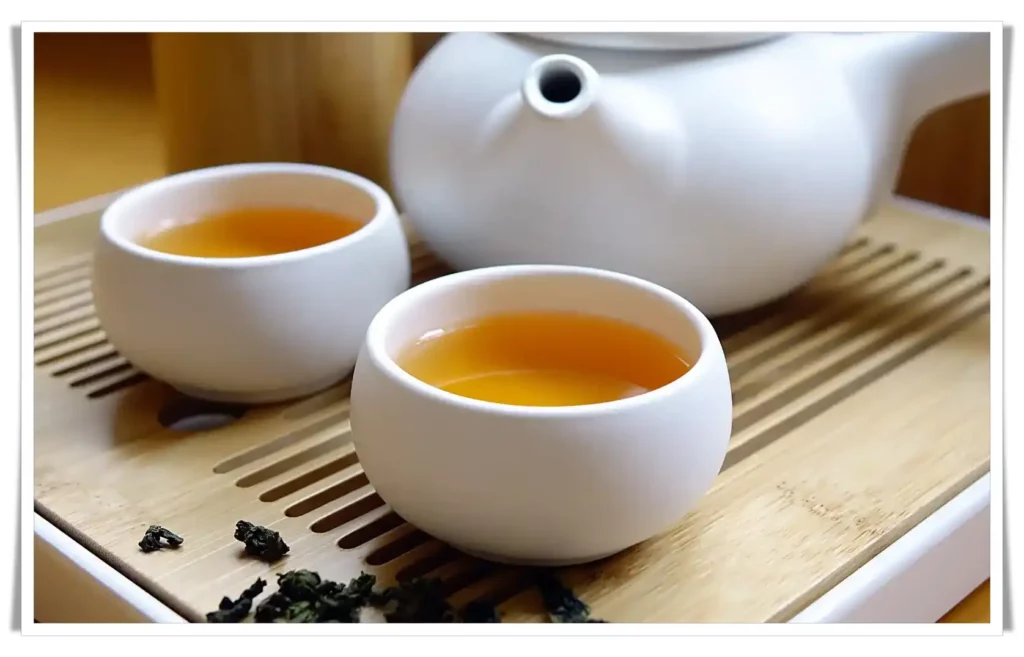
FAQs About Brewing Science
- Why is caffeine called theine in tea? Despite the different nomenclature, they're the same compound, named by two chemists around 1800.
- How do Infusion Methods impact the caffeine content? The infusion time directly affects the caffeine content in both tea and coffee. Longer infusions result in different caffeine concentrations.
- What role do tannins play in tea's caffeine absorption? Tannins bind to theine, moderating its absorption and prolonging its stimulating effect.
Conclusion
Diving into Brewing Science and Infusion Methods 🍵☕️ unveils a realm of fascinating intricacies hidden in our everyday beverages. The chemistry, the art, and the passion all culminate in that perfect cup. By understanding these nuances 🧪🔍, you not only become a more informed consumer but also acquire the power to tailor your drinks to your desired effects and tastes 🎯. So, next time you brew, remember the magic behind every sip and cherish the symphony of flavors and sensations dancing on your palate. Cheers to a world of brewing knowledge and savoring experiences!
We invite you to dive deeper. Explore our article "What Are The Best Therapeutic Tea?" here. Or, for a visual treat, check out our YouTube video, “What Are The Best Therapeutic Teas?” here.
Let's journey together in Brewing Science. Share your thoughts, experiments, or questions in the comments below. Your insights enrich our community!
Relevant Resources:

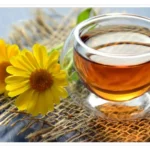


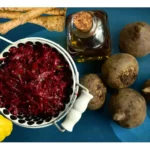
I really enjoy reading your website; it’s full of interesting things. Thank you for planting the seeds of knowledge. I hope that you have a harvest of success and continued wealth.
I really like reading through a post that can make men and women think. Also, thank you for allowing me to comment!
Pretty! This has been a really wonderful post. Many thanks for providing these details.
Wow, fantastic weblog structure! How long have you been running
a blog for? you made running a blog glance easy. The overall glance of your web site is magnificent, let alone the content material!
You can see similar: dobry sklep and here sklep internetowy
Just wish to say your article is as surprising.
The clarity on your post is just nice and i can think you are knowledgeable in this
subject. Fine with your permission allow me to snatch your RSS feed to keep
up to date with impending post. Thank you one
million and please continue the gratifying work.
I saw similar here: sklep internetowy and
also here: dobry sklep
Yazarın samimi ve içten üslubu gerçekten dikkat çekiciydi. İçeriğin derinlikleri beni düşündürdü ve yeni perspektifler kazanmama yardımcı oldu. | Taşınanlara Halı Bakım Kılavuzu
Beykoz Oturma Grubu Yıkama | PENTA’nın sunduğu çözümler, işletmeler için gerçekten bir zorunluluk gibi görünüyor. Bu yazı, bu konuda çok değerli bilgiler içeriyor.
Spot on with this write-up, I absolutely believe this amazing site needs a lot
more attention. I’ll probably be back again to read more, thanks for the information!
I saw similar here: Sklep internetowy